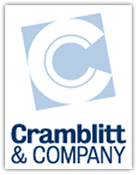PR in practice: Anatomy of the case study, pt. 1
June 12th, 2009 | 1 Comment
One of the best things a company can do is write about how customers use its products. Not in the pandering way that makes “case study” a dirty phrase, but in a way that enlightens current and potential customers about how your product works to solve a problem or make something better. Provide stories about solutions to common problems and you’ll have a built-in readership, whether the stories are published in a trade publication or website, an e-newsletter, the company website, or all of the above.
In the first of a three-part posting, I’ll define what makes a good case study and how to obtain the information you need before writing.
What is a case study?
A case study outlines how a customer uses a product or service to do something faster, better or cheaper.
What makes a good case study?
- Detail. With a case study, God is in the details. Readers want to know exactly how something was done and why it is important. They want solid information: numbers, comparisons, customer testimonials, “before-and-after” contrasts.
- Uniqueness. The best story is one that an editor or reader has never heard before. Or, if he or she has heard it before, it should be presented in a way that will make it stand out from the hundreds of others appearing on the web at any given time.
- Relevance. The story has to be relevant to key issues facing your customers or potential customers.
- Good writing. Well-written stories, even if not as newsworthy, will get read before ones that are written poorly.
- Images. Images might not sell a mediocre story, but they can make a good story great.
Peeling the onion (getting inside the story)
Background Information. Before conducting interviews, obtain as much information as possible about the application and the customer. The best sources: the account rep or technical person who deals with the customer for project-specific information, and the company web site and/or trade publications for more general company information.
The Interview. This is the most important source of information. The information you are able to coax out of the customer contact will mean the difference between a generic story and a story that has uniqueness, detail, personality and focus. Because many customer contacts are difficult to reach, you must try to get all necessary information in one interview. Some things to keep in mind:
- Concentrate on the 5 Ws and an H (Who?, What?, When?, Where? Why? and How?), as well as on the SW (So What?).
- Be polite, but firm in your questions. Don’t be negative, but be cynical, as cynical as the editor or reader who will be judging your story.
- Don’t accept vague statements on face value. The response to “Our customers are happy with our new products,” should be (in a most pleasant voice): “How do you know that? Have you surveyed them or found a way to measure their happiness?”
- Be curious and interested. Listen attentively and ask questions to find out more. If the person whom you are interviewing feels that you are curious and interested, he or she is much more likely to spend more time with you.
- Be prepared, but be flexible. Always have a list of questions you need to ask, but don’t be afraid to deviate into other areas if that’s where the interview takes you. Tangents often reap the greatest rewards.
- Be gently persistent. Keep trying to get the key information you need. If a question doesn’t get you what you want the first time around, have other variations of it ready and ask it again later in the interview.
- Ask about the people you are interviewing. Find out how long they have worked for the company, in what position they started out, other companies they have worked for, etc. If they had a particularly tough problem to overcome, sympathize. Remember, you are interviewing a person.
- Put the interviewee at ease. Make sure the interviewee knows up front that he or she will have a chance to review the article before it goes to the publication.
- Don’t be afraid to appear dumb. If you are prepared, you should be confident. If you don’t understand something, ask the person politely to explain. “Perhaps I should know what a tessellated pixel is, but I don’t. Could you please define it for me?” If you don’t hear something correctly, ask again: “I’m sorry, could you tell me again what hardware you are using?”
- Three words: benefits, benefits, benefits. Technical information is good for supplying the detail required for a good story. But, the benefits to the company are the real story. Technology without results is just a toy.
- Get correct titles and name spellings. Nothing turns off a source of information worse than having his or her name spelled wrong after spending 30 minutes to an hour talking with you.
- Find out if they have images available. A picture is worth…
- Thank the interviewee and ask permission for future help. Time is extremely valuable. Thank the interviewee for his or her time and ask if it is OK for you to call him or her in the future if you need more information.
- Be clear about your intentions. Let the interviewee know when you will have a draft for review and in what time frame you are seeking approval and images.
Next: Interview questions and pre-writing preparation.

